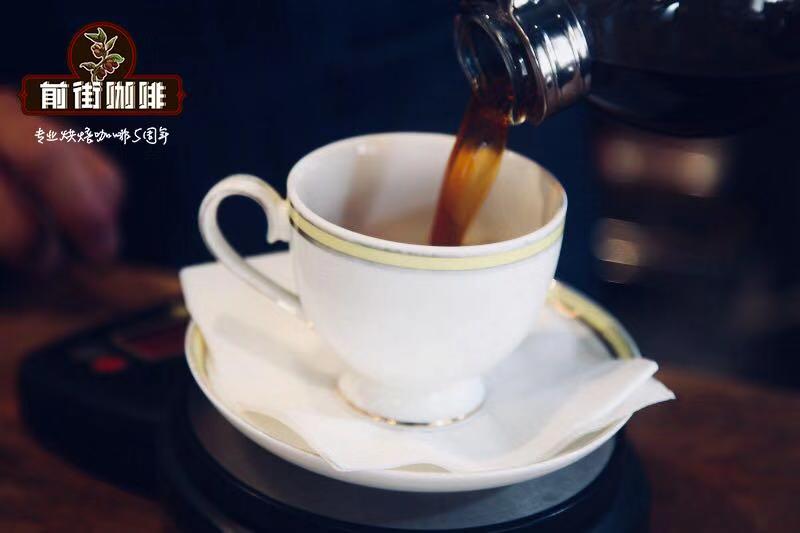What is the process from coffee bean to coffee | A brief analysis of the journey from a coffee bean to a cup

Professional coffee knowledge exchange more coffee bean information please follow the coffee workshop (Wechat official account cafe_style)
The coffee beans we see every day are cooked coffee beans, which are roasted from raw coffee beans. So, do you know what happened before it became a raw coffee bean?
Today I'll show you how fresh coffee fruits turn into raw coffee beans.
At high altitudes in the tropics where there is plenty of sun and water, coffee trees mature after 3 to 4 years of growth and begin to bear fruit, with each fruit arranged in clusters or clumps along the branches.
Coffee beans are the seeds of coffee trees. The outside of the seed is a layer of peel, which can be picked as soon as it turns red.
Coffee beans can be picked in two ways. One is picking in pieces: take a walk in the garden and pick all the beans. The other is selective picking: walk between trees several times at intervals of 8 to 10 days and pick only ripe red berries.
The picked coffee fruit will rot in a short period of time if it is not treated. Therefore, it is necessary to refine the peel and pulp of the fruit, and then take out the seeds.
There are three refining methods of coffee beans: drying, washing and semi-washing, which is a compromise between the two.
After that, coffee beans need to go through finishing processes such as grinding, polishing, screening and so on before being exported. The aim is to remove impurities and bad beans mixed in high-quality coffee beans so as to ensure the quality of raw coffee beans to the greatest extent.
Coffee beans are the second largest commodity in the world after oil. Nearly 10 million tons of coffee beans are produced in the world every year, most of which take a long journey. Starting with plantations, in some economically underdeveloped areas, they even need to be carried out by animals, and then reach all parts of the world by land, water, railway and today's aviation system.
Processed coffee beans are also stored for export. The sheepskin (dried endocarp) which is removed by machine before export is cleaned, screened, classified, graded and finally packed. The washed coffee beans have a clean taste, no miscellaneous flavor and charming fruit aroma.
After the raw coffee beans are transported to the designated destination, they still need to be roasted before they can become the coffee beans we usually see. It can be said that 80% of the factors that determine the taste of coffee come from coffee beans, and the other 20% depend on roasting. The purpose of roasting coffee beans is not only to scorch the coffee beans, but also to make the raw beans give full play to their maximum characteristics and show the best quality by different degrees of roasting.
Finally, the roasted coffee beans are sent to the cafe, made into coffee drinks of various flavors in the hands of baristas, and sent to everyone who loves coffee.
It takes so much to turn a coffee bean into a cup of coffee, do you still think the coffee is expensive after reading it? In fact, there is a reason for the price, although you care about whether it is worth paying such a high price for a cup of coffee, we are more concerned about whether buying this cup of coffee makes you feel good value for money.
END
Important Notice :
前街咖啡 FrontStreet Coffee has moved to new addredd:
FrontStreet Coffee Address: 315,Donghua East Road,GuangZhou
Tel:020 38364473
- Prev

Can you still drink coffee after the taste period? how long is the best taste period for freshly ground coffee?
Professional coffee knowledge exchange more coffee bean information Please follow the coffee workshop (Wechat official account cafe_style) James Freeman, founder of Apple Blue Bottle in the coffee industry, once said: coffee beans roasted from the roaster will reach their peak in 48 hours. Therefore, we only sell coffee produced within 48 hours. Coffee appreciation period and bean cultivation period
- Next

Where is the source of Starbucks coffee beans in China | learn about the origin of Starbucks coffee beans in China.
Professional coffee knowledge exchange more coffee bean information please follow the coffee workshop (Wechat official account cafe_style) Starbucks Yunnan Coffee Project Starbucks has been ploughing the Chinese market for many years
Related
- Beginners will see the "Coffee pull flower" guide!
- What is the difference between ice blog purified milk and ordinary milk coffee?
- Why is the Philippines the largest producer of crops in Liberia?
- For coffee extraction, should the fine powder be retained?
- How does extracted espresso fill pressed powder? How much strength does it take to press the powder?
- How to make jasmine cold extract coffee? Is the jasmine + latte good?
- Will this little toy really make the coffee taste better? How does Lily Drip affect coffee extraction?
- Will the action of slapping the filter cup also affect coffee extraction?
- What's the difference between powder-to-water ratio and powder-to-liquid ratio?
- What is the Ethiopian local species? What does it have to do with Heirloom native species?

